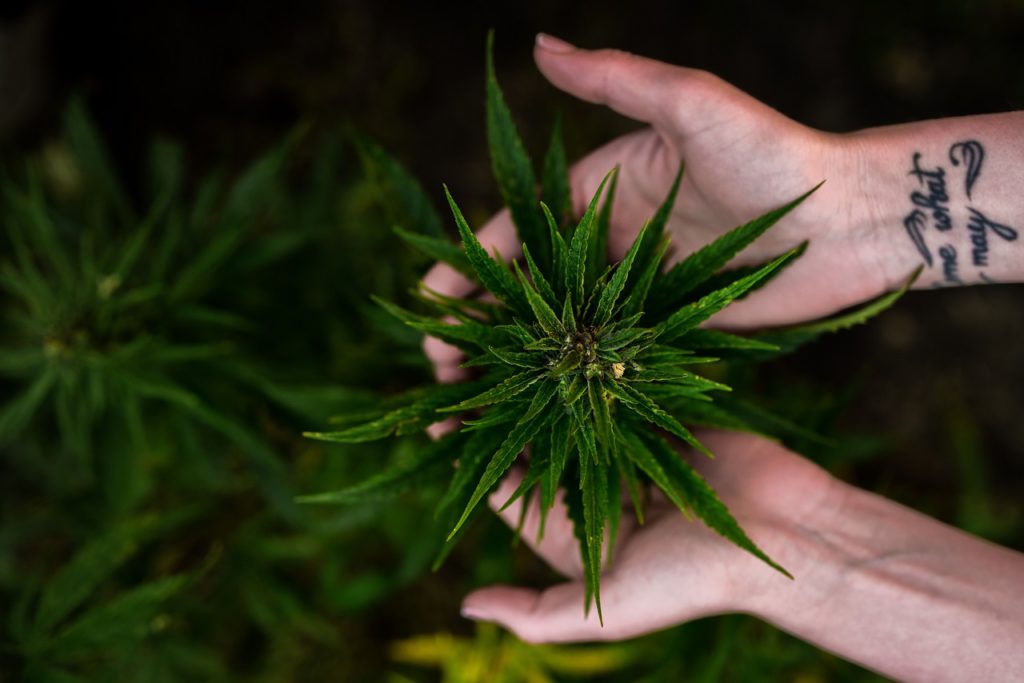The cannabis industry has grown strongly in recent years as legalization has progressed in many states, with 11 states passing laws on recreational use and others likely to follow. In addition, almost a year ago the Farm Bill was passed, which allowed cannabidiol (CBD) to be approved nationwide if it was extracted from hemp. However, the country may not yet be ready for these developments.
Police can’t tell the difference between hemp and marijuana


One of the biggest challenges for the cannabis industry is that it can be almost impossible to spot the difference between hemp and marijuana (especially CBD) since the plants look basically the same.
This has made it very difficult for the police to determine whether someone is transporting hemp or marijuana.
The limit for a plant considered to be marijuana is 0.3% tetrahydrocannabinol (THC). It could, therefore, be a tightrope walk whether someone is committing a crime or not, especially if the test is not precise enough.
Truck drivers are particularly at risk, because it is not easy for law enforcement to distinguish between hemp and marijuana.
The cannabis industry is becoming very popular in the emerging markets and one prominent example is Europe’s CBD and hemp sector, predicted to be worth $14.67 billion by 2026.
These new industries can be difficult to navigate, but cannabis news apps like Hemp.im provide some clarity and can help prospective investors understand the market.
In the app, you can find trusted sources and the latest information on the top stories.
Recognizing the difference between hemp and marijuana is not easy
A recent New York Times story showed another problem where the difference between hemp and marijuana was discussed.
If someone consumes CBD, a drug test could still be positive for THC. In one example, a CBD-infused gummy bear was sufficient to have a positive THC test.
This means that consumers could take significant risks when consuming medical marijuana, which is approved in over 30 countries. They could be tested positive for THC and face criminal consequences in states where recreational cannabis is still banned.
A certain THC level may be unavoidable in many types of CBD products, and whether you have a positive THC test may simply be due to the accuracy of the test.


How hemp has a big impact on businesses
Hemp products are safer to use because of their low THC content. This is an important reason why hemp has been legalized nationwide by the Agriculture Act.
If problems were to occur more frequently, however, this could call into question the potential growth of the cannabis industry.
In the first year of retail sales, cannabis producers in Canada and other countries in the cannabis industry generated more than $1.1 billion in revenue.
However, this figure is expected to increase when THC edibles will be available for sale.
Tests that tell the difference between hemp and marijuana is important for consumer safety
Concerns about marijuana tests could be an obstacle to the industry. However, tests that tell the difference between hemp and marijuana is a matter that must be addressed immediately to ensure that consumers are not afraid of CBD.
There is a real need for an accurate and reliable test method to determine whether someone has consumed hemp, some CBD, or THC. There is a lot at stake with the potentially harmful consequences that could follow you throughout your life.
If consumers don’t feel safe when taking CBD products, the demand and growth of the industry is at risk. As long as THC is not fully legal across the country, the problem is not solved.
Cannabis tests in Canada still need to be improved


Even in Canada, where marijuana has been legal for over a year, testing for endangerment remains a big issue. Although there is an approved saliva test, there are still questions about its effectiveness and accuracy.
A company that is able to develop an accurate test could be very helpful and might also be a takeover target. However, this is likely to take time, as the test will not only need to work, but will also need the support of the government and the police.
__
(Featured image by Rosemary Ketchum via Pexels)
DISCLAIMER: This article was written by a third party contributor and does not reflect the opinion of Hemp.im, its management, staff or its associates. Please review our disclaimer for more information.
This article may include forward-looking statements. These forward-looking statements generally are identified by the words “believe,” “project,” “estimate,” “become,” “plan,” “will,” and similar expressions. These forward-looking statements involve known and unknown risks as well as uncertainties, including those discussed in the following cautionary statements and elsewhere in this article and on this site. Although the Company may believe that its expectations are based on reasonable assumptions, the actual results that the Company may achieve may differ materially from any forward-looking statements, which reflect the opinions of the management of the Company only as of the date hereof. Additionally, please make sure to read these important disclosures.
First published in VestorsCapital, a third-party contributor translated and adapted the article from the original. In case of discrepancy, the original will prevail.
Although we made reasonable efforts to provide accurate translations, some parts may be incorrect. Hemp.im assumes no responsibility for errors, omissions or ambiguities in the translations provided on this website. Any person or entity relying on translated content does so at their own risk. Hemp.im is not responsible for losses caused by such reliance on the accuracy or reliability of translated information. If you wish to report an error or inaccuracy in the translation, we encourage you to contact us.



Comments are closed for this post.